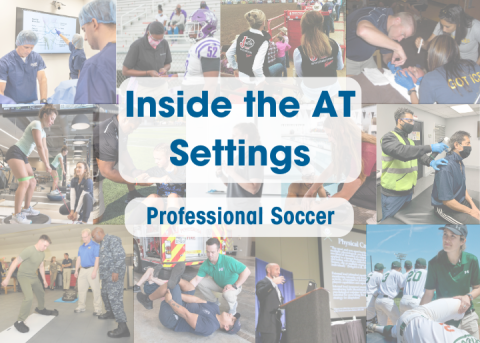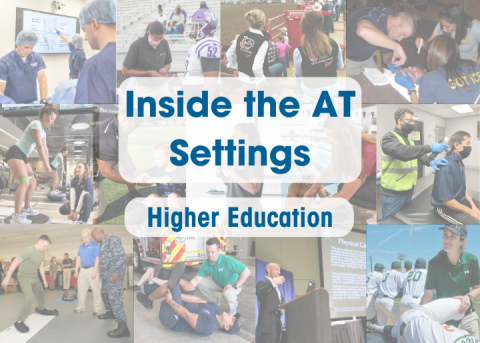
Introduced in the April NATA News, this NATA Now article series provides insight into the different athletic training settings as well as information athletic training students and interested ATs need to know. The series also provides tips from members on how to succeed in each setting.
Mary Housel, MS, LAT, ATC, has been working on a per diem basis for 17 of her 23 years in athletic training. She currently works with predominantly secondary school athletes, with some college and youth club sports mixed in, with Capstone Medical Services LLC and Jag Athletic Training overseeing her work.
Her transition from a full-time position to per diem was driven by changing familial needs, Housel said.
“I had worked full time at different high schools, but … I couldn’t sustain working full time and paying for child care,” Housel said. “To keep my skill set and [continue to] work in athletic training, I transitioned to per diem work, covering when I could, where I could as it fit my family’s schedule.”
Read on to learn more about the per diem setting from Housel.
Typical Makeup of Your Population
Most of my athletes are high school-aged athletes competing in multiple sports a season, for both school and club teams.
Non-AT-Related Skills/Education/Certification Required or Helpful for Your Setting
I’m a previous Girl Scout and current Girl Scout leader, and I volunteer with many different organizations in my community. I also obtained my master’s degree in sport psychology and my certificate in strength and conditioning coaching through the National Strength and Conditioning Association. I believe all these experiences have helped me to be well-rounded and versatile in performing my tasks as an athletic trainer – someone who can delegate, be professional, manage my time, treat the “whole athlete” and interact with any age group from youth athlete to parents, coaches and administrators. I’m also a parent and former athlete, so I can relate to both the athletes and their parents in meeting their needs in providing optimal care.
Common Injuries Observed or Encountered in Your Setting
I’d say the most common injuries I see are ligament sprains to the ankle and knee, concussion or head/neck injuries and overuse injuries from athletes participating in multiple sports in a season.
Traits of a Successful AT in Your Setting
Any athletic trainer who works per diem needs to err on the side of caution, be good at documentation to have clear records of every interaction, be good at communicating and providing expedited care to the athlete to medical doctors appropriate for treating the injuries or illnesses seen. An athletic trainer working per diem also must be adaptable to a fluctuating schedule and any changing conditions whether it be location, teams or athletes you may never see again. Always be professional in your interactions with whomever you work with or speak to, and always be mindful that you may be the first athletic trainer that someone may have ever met; you truly are the face of the profession!
Misconceptions About Your Setting and/or Patient Population
Many people assume that it’s not possible to work full time in per diem, or that people do it just to make an extra buck. That’s not always the case. Many people I’ve known through the years work per diem as their families grow and their children go through school and then try to return to the full-time workforce in other capacities. Also, many people assume that per diems don’t get paid what they’re worth where instead per diems need to find what an acceptable wage is, what documentation and legal regulations need to be followed in your state of practice and always – always – cover yourself! Young and old, newly certified and experienced ATs alike can thrive in the per diem setting.





